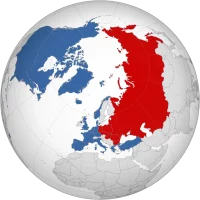
The end of World War II ushered in an era of intense arms competition between the Soviet Union and the United States. Both sides produced nuclear armaments and other weapons of mass destruction at increasing rates as the bipolar world order evolved, finally achieving a state known as “mutually assured destruction” or MAD. President Eisenhower initiated efforts to control the proliferation of arsenals, which ultimately led to the Arms Control and Disarmament Act, enacted September 26, 1961.
This legislation, passed by 87th Congress and signed by President John F. Kennedy, established the Arms Control and Disarmament Agency (ACDA). ACDA was designed to conduct, coordinate, and support research of the formulation for the arms control and disarmament policy, manage and prepare U.S. participation in international negotiations for arms control and disarmament and coordinate information to the public on arms control policy.
Helmut Sonnenfeldt, who left Germany for boarding school in England just before the advent of World War II, came to the U.S. in 1944, served in the Army and began working for the State Department in 1946. His knowledge of Russian and of Soviet policy led to his assignment to the new U.S. Disarmament Agency. During his tenure there, Sonnenfeldt traveled to the Soviet Union to negotiate on arms reductions, and was instrumental in the creation of the U.S. Arms Control and Disarmament Agency. Sonnenfeldt was interviewed by Charles Stuart Kennedy in July, 2000.
For more information about the Cold War, arms control, or the U.S.-Soviet relations, follow the links. You can also read about the push to maintain the test moratorium and the Non-Proliferation Treaty (NPT).
“Everything that we did was focused on war, but not enough on peace”
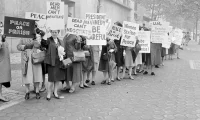
SONNENFELDT: I continued with INR [the State Department’s Bureau of Intelligence and Research] until 1960. I had become rather specialized in Soviet disarmament policy, or it was called “disarmament” in those days. You know, we had these constant meetings through the UN, and I actually participated as a Soviet expert in a 1969 delegation led by Harold Stassen at meetings in London with the British, French, Canadians, and Soviets.
They met for several years in a row in the mid-’50s. In 1955, before a four power summit, the Soviets published a grand scheme for staged disarmament, but these were all negotiations about words, not about the details of actually doing things.
In the 1960 presidential election campaign, at the end of the Eisenhower administration, there was quite a bit of criticism around the country that we weren’t doing enough for peace. [Then-Senator John F.] Kennedy and other Democrats made a big issue of the fact that we weren’t doing enough to try to stop the arms race and [were trying to] prevent some disaster just through the sheer accumulation of more and more weapons.
People claimed that we had millions of people in the military and elsewhere and that everything that we did was focused on war, but not enough on peace, not enough on curbing the nuclear arms race. They said the Eisenhower administration had really not done very well in this, and there should have been more creativity. There was the “Pugwash movement” [named for the site of a pro-disarmament conference in Pugwash, Nova Scotia] and so on.
A lot of Americans were restless. President Eisenhower decided that to meet some of this criticism and to help [then-Vice President and presidential candidate] Nixon meet it, there ought to be a separate organization in the government to deal with disarmament.
By Executive Order, he created the U.S. Disarmament Agency [later called the Arms Control and Disarmament Administration, ACDA] in October of 1960, shortly before the election, to show that he was serious about curbing the arms race, and his administration was serious, and the U.S. was serious. It would have required legislation, which couldn’t be passed at that time, to establish it as a separate agency, so it was established within the State Department, but as a sort of autonomous agency.
“This is your assignment, and you’d better go!”
They were scrounging around the government to find some people that they could put into this new Disarmament Administration because they wanted it to start up and be visible, maybe even before Election Day; but even beyond that, disarmament policy-making was diffused around the government. Over some resistance on my part, I was shifted from INR to that smallish agency, which had maybe 40 or 50 people when it was set up, initially under Edmund Gullion, a senior Foreign Service Officer.
I didn’t particularly care for this because I didn’t think disarmament was headed anywhere very much, other than a lot of words being ground out in different communiqués and statements. Essentially I was told, “This is your assignment, and you’d better go!” I don’t know whether Hugh Cumming, the Director of INR, was still in place, but whoever it was, in effect said, “Well, you’ve been told, ‘This is where you’re going,’ and if you don’t go there, maybe you’re not going anywhere.” Perhaps it wasn’t that blunt.
It turned out that the SY (State Department’s Office of Security) people, who were periodically listening to my telephone calls, heard one in which I was complaining to a friend of mine that I was being assigned over there even though I didn’t really think very much of the prospects of disarmament; and I wasn’t sure whether this was a way of getting rid of me once again in INR, so I ended up over there.
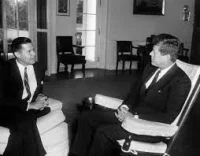
Ed Gullion, a prominent career guy, was the temporary head of it at that time (Gullion is seen at right with President Kennedy). Later he became the first U.S. Ambassador to the Congo. He had been somewhat involved in disarmament negotiations, but also in Vietnam, and he had had a varied career and was well-connected. We got started trying to do something about U.S. disarmament policy. Then the election came, and Kennedy was elected. Gullion knew Kennedy socially, as he knew just about everybody else in town.
He was told to keep the effort going because the Kennedy people had raised this whole issue in the first place – that there were thousands, tens of thousands, hundreds of thousands [of] people working on war and only fewer than a hundred on peace; and so this was the U.S. Disarmament Administration.
Kennedy was quite interested in it right from the start. The idea developed in the transition period before Kennedy’s inauguration that relations with the Soviets were bad because of the U-2 and some other things, and that we really needed to find a way to get a new disarmament forum going again with the Soviets to pick up some of the threads that had been tattered in the previous year. John McCloy was brought in to head the Disarmament Administration after the inauguration in 1961, and I guess Gullion stayed with him for a while and then eventually left.
“Soviets had a long history of advocating general and complete disarmament of everything, but they were very short on how you would inspect and control it.”
[John McCloy was one of the] “grand old men of the establishment”. He was the head of “the establishment,” in some people’s views. He’d been the U.S. High Commissioner in postwar Germany and had lots of experience in World War II in the War Department. He was prominent and prestigious, and even though he was a Republican, he was nonpartisan in his government service. His task was not only to see if something could get re-started with the Soviets in terms of disarmament talks, but also to establish a permanent Arms Control Agency. So he rather enjoyed that.
The first thing that happened after the Kennedy inauguration was that McCloy was told to go to Moscow with a team and meet with the Soviets to see if we could create some new forum (the old UN forums had broken down), and also work out a general basis for such a forum – that is, not exactly a charter, but a sort of substantive basis for what this new forum, which would still be under the UN, would be doing, with an agenda for them to negotiate. I became quite friendly with John McCloy… so he took me along in the group (he knew me somewhat from some other contacts).
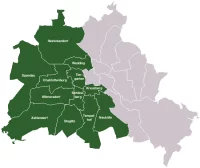
His instructions were to try to get some movement on arms control, and also to talk to Khrushchev about the still-extant Soviet demand to turn West Berlin into a “Free City”. We actually agreed to reconstitute a disarmament forum in the UN, which the Soviets had boycotted for months.
Needless to say, for me, going to Moscow for the first time in 1961, after having worked on the Soviet Union for almost 10 years, was a great fascination. McCloy also took along some people that he had brought in, and some other experienced people from the government, among them Adrian “Butch” Fisher, who had been the State Department Legal Advisor in the Truman administration. It was quite a potent delegation.
There were also a couple of newcomers, young people who came into the Kennedy administration at fairly high levels, who thought they were going to save the world, but didn’t quite fit into the daily grind, and I think they were politely asked to go back home and assume their new positions at home. So the delegation took a little while to get trimmed down to the right size.
We had these very intensive talks with the Soviets about a general statement on the goals of disarmament. It involved a lot of haggling because the Soviets had a long history of advocating general and complete disarmament of everything, but they were very short on how you would inspect and control it.
So it went on and on and on. Also, of course, since the late ’50s, we in fact had been in a “Berlin crisis” because Khrushchev had proposed establishing West Berlin as a free city.
“Kennedy felt tested early on in his administration.”
It became more and more serious because prestige was involved in the Soviet case, and of course, there was complete resistance to this in West Berlin and Germany. With the Kennedy inauguration, the Soviets didn’t let up, and Kennedy felt tested early on in his administration. There was a general theory that that’s what Soviets do with new presidents anyway, to see what kind of a person they had to deal with.
So John McCloy, with his German experience, was also instructed after we got there, by Kennedy personally and Secretary of State Dean Rusk, to go talk to Khrushchev about the Berlin business, and to warn him that any pressure or any unilateral action would be very serious. Actually, while we were there, Kennedy issued an order to mobilize 150,000 troops.
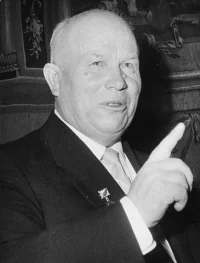
I wasn’t so much involved in the Berlin thing, but McCloy eventually ended up having a meeting with Khrushchev in the Crimea, where Khrushchev was vacationing (Image right from Bettmann/CORBIS). We were there in the wintertime. So this was a good experience for me, to have hands-on contacts with Soviet officials.
I’d seen a little bit of this at the Surprise Attack conference in Geneva; and also, back in the Eisenhower administration, I’d gone with Harold Stassen for two years in a row to London, where this UN disarmament committee was meeting.
A senior diplomat named Valerian Zorin headed the Soviet delegation. (He became famous in the Cuban missile crisis, when he was the Soviet UN representative.) I met a lot of younger Russians, Soviets, who were on that team, who later became very senior people in the Foreign Ministry. So it was interesting for me to see some real Soviets in the flesh.
I had met some when I was stationed in Germany in the Army as a CIC (Counter Intelligence Corps) agent right on the border with the Soviet zone, and we had some liaison with the Soviets. But this was for me extremely helpful to see these people in the flesh, and to listen to them and get acquainted with them and see something about their style and mentality, because I really hadn’t been exposed a whole lot to that.
The long and short of that is that eventually we came up with an idea of what a new forum would look like. It would be enlarged to have more members from the Third World. The Soviets didn’t just want to confront four Western powers, as they had been doing in the five-power Disarmament Committee. That was related to another thing that created a crisis in 1960. Khrushchev wanted to have three Secretaries-General of the UN in order to prevent the West from constantly putting a new guy in there and dominating the UN.
The Troika blocked the UN for a long time; and there was a Congo crisis in the 1960s, which got the Soviets and the U.S. pitted against each other. It was kind of a tough period. But anyway, we reached a compromise on what a disarmament forum might look like.
This had to be approved by the UN General Assembly (UNGA) in due course. And we also eventually agreed on a big, long document on general and complete disarmament, which we haggled out word-for-word and sentence-for-sentence. Arthur Dean got involved in this because McCloy was concentrating more and more on getting this new agency established which eventually became the Arms Control and Disarmament Agency.
“What we really needed was to control arms rather than to talk about general and complete disarmament.”

There were people on the Hill who thought the whole disarmament business was kooky and might lead to unilateral disarmament, and what we really needed was to control arms rather than to talk about general and complete disarmament. So the compromise name for this agency was the Arms Control and Disarmament Agency (ACDA).
I had by that time become one of two or three policy officers in what was still called USDA [U.S. Disarmament Administration]. I left behind my pure analytical and research role and mentality. It was interesting to devise policy approaches and how to implement them.
Eventually a draft statute was put together and sent up to the Hill, which made some amendments and added the phrase, “Arms Control.” Congress also wanted to create an advisory committee for this Arms Control Agency to make sure that it wouldn’t just be staffed by a bunch of strange people, such as “peaceniks”. (President Kennedy is seen at left signing the ACDA Act legislation, creating the agency.)
There were people who were obsessed with guilt because of Hiroshima, and so on. Congress wanted to have a rather tough man, not exactly as a supervisor, but a monitor of what the agency was doing. That was all put into this statute.
By October 1961, the Arms Control Agency was established by Congress. Mr. William Foster, a very prominent, respected Republican and a former industrialist who’d been in the Defense Department, was the first head of the Agency. His appointment was a way for Kennedy to tell the more skeptical Republicans that he had two tough guys in this arms control business. John McCloy was made the head of this advisory group, the General Advisory Committee.
Another of McCloy’s tasks was to create a permanent agency to replace the organization that had been established late in 1960 by President Eisenhower’s Executive Order. I decided to leave the agency when the Arms Control and Disarmament Agency was established by Congress.
